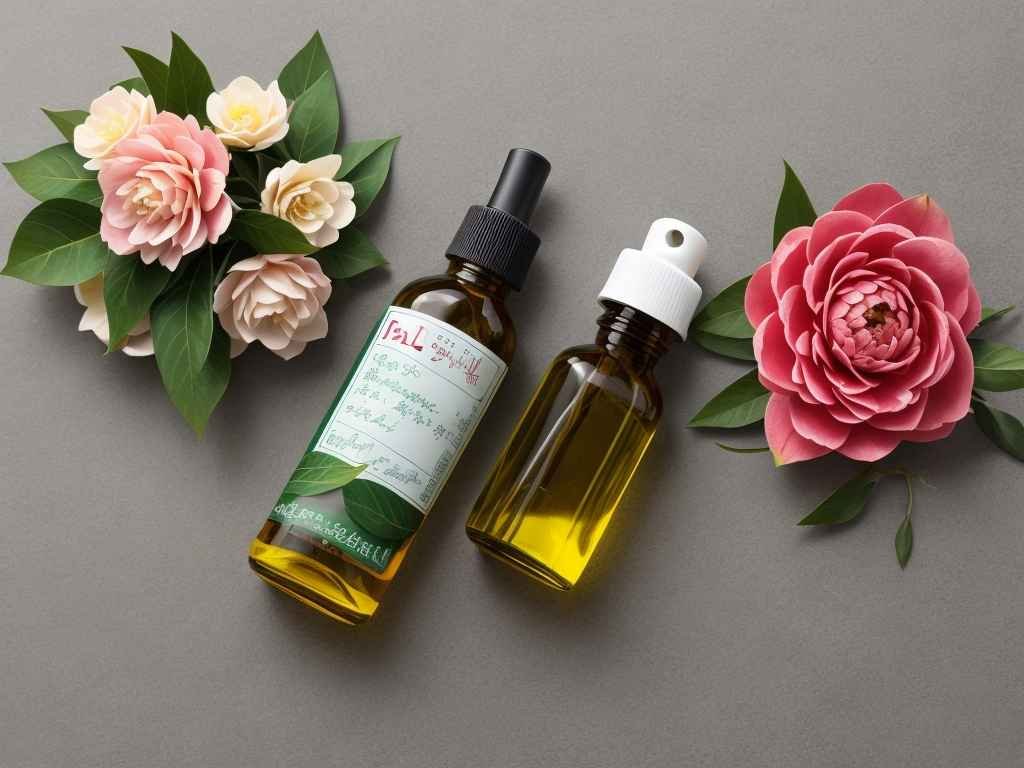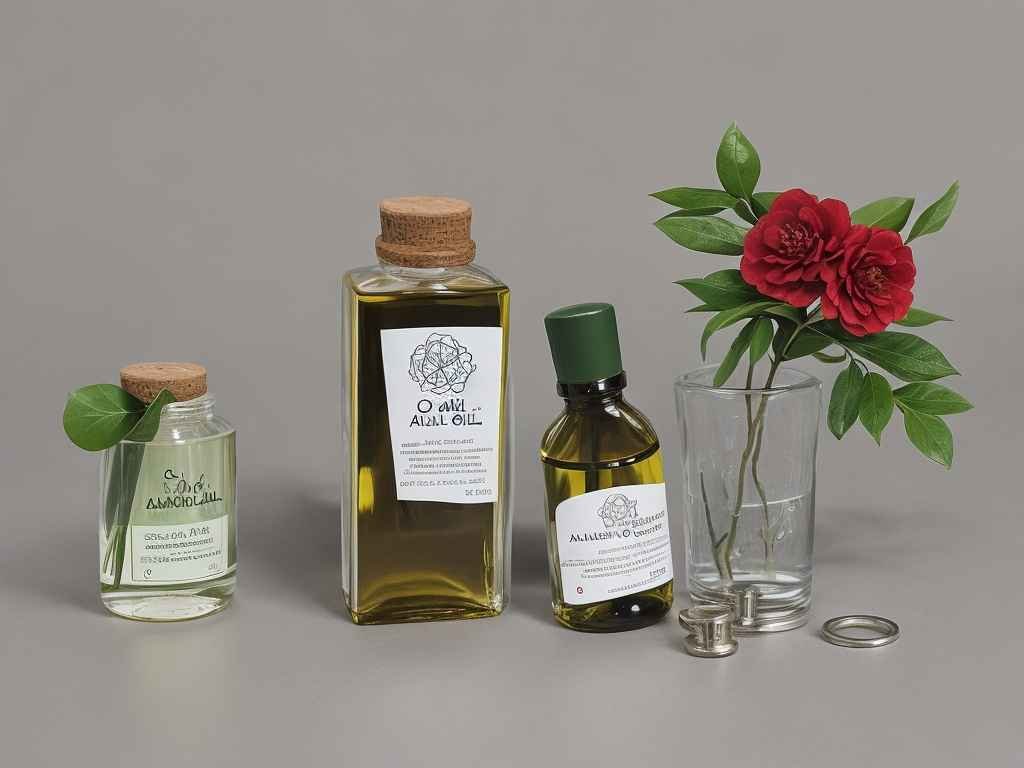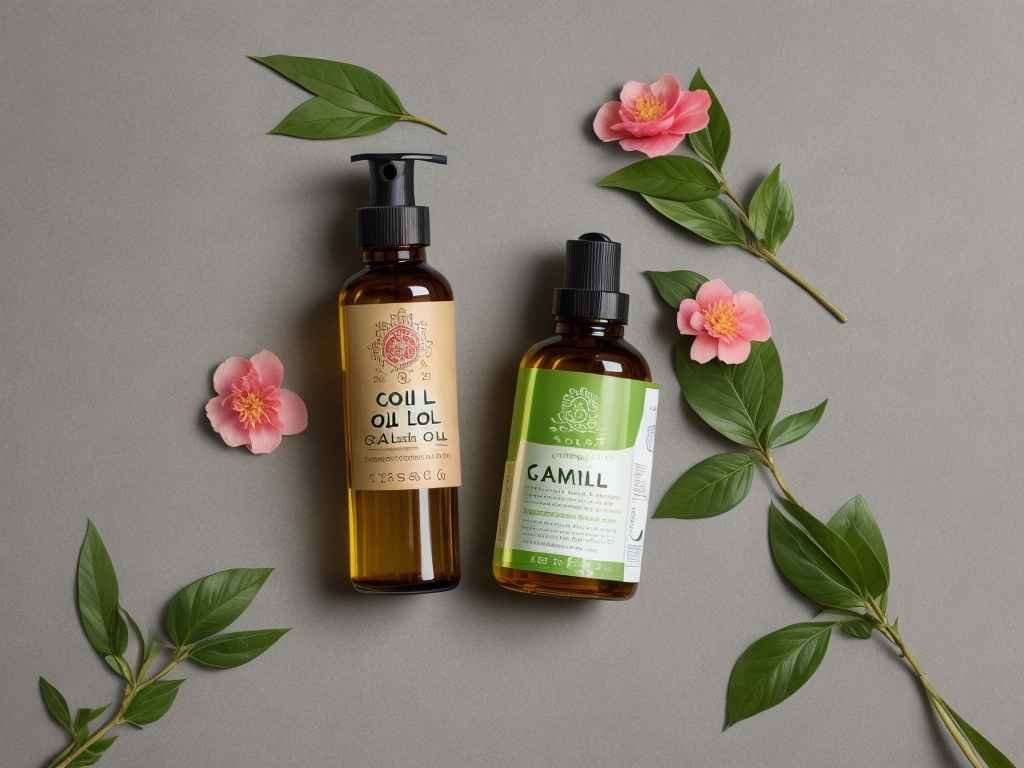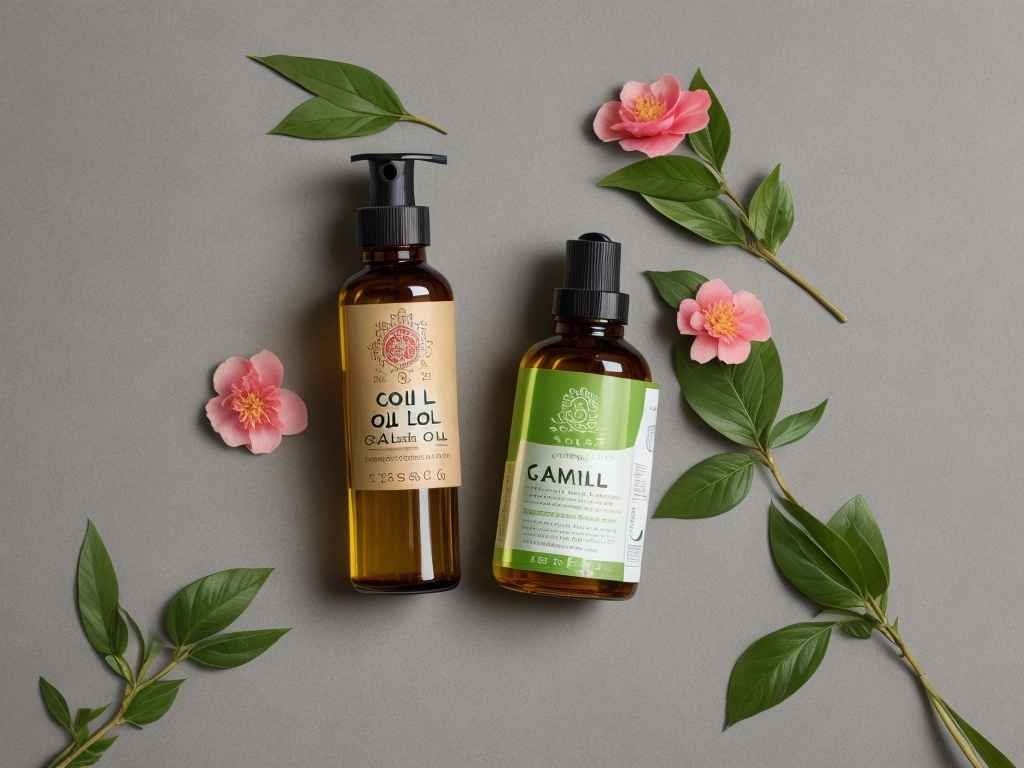Camellia oil, often lauded as one of nature’s most potent elixirs, has gained popularity worldwide due to its numerous health and beauty benefits. Revered for centuries in Asia, particularly in China and Japan, this oil is derived from the seeds of the Camellia plant. With a rich history and an impressive array of uses, camellia oil is more than just a trendy ingredient—it’s a staple that offers both ancient wisdom and modern appeal. This comprehensive guide will delve deeper into the origins, production methods, nutritional profile, and multifaceted applications of camellia oil.
The Origins and Historical Significance of Camellia Oil
Camellia oil’s history is deeply intertwined with the cultures of East Asia, where it has been a cornerstone of traditional medicine, beauty rituals, and culinary practices. The Camellia plant, known scientifically as Camellia oleifera, Camellia sinensis, and Camellia japonica, is indigenous to the mountainous regions of China and Japan.
Traditional Uses in Ancient China and Japan
In ancient China, camellia oil was an integral part of Traditional Chinese Medicine (TCM). Healers used it to treat burns, cuts, and skin ailments due to its soothing and healing properties. The oil’s ability to nourish the skin and hair made it a popular choice among women in royal courts who sought to maintain their beauty.
In Japan, camellia oil, known as “tsubaki oil,” was a well-guarded beauty secret of geishas and samurais. Geishas used the oil to remove their heavy makeup and maintain their porcelain skin, while samurais applied it to their swords to prevent rusting and maintain a sharp edge. This dual use highlights the oil’s versatility and the high regard in which it was held.

The Production Process: From Seed to Oil
The quality of camellia oil is highly dependent on the extraction process. Traditionally, camellia seeds are harvested by hand and sun-dried to reduce moisture content. This careful handling is crucial to ensure that the seeds retain their natural oils and nutrients.
The most common method of extraction is cold-pressing, a technique that involves pressing the seeds at low temperatures. This method preserves the oil’s nutritional integrity, ensuring that it remains rich in fatty acids, vitamins, and antioxidants. Cold-pressed camellia oil is unrefined, retaining its natural color, aroma, and beneficial properties.
Nutritional Profile and Composition of Camellia Oil
Camellia oil boasts a nutritional profile that rivals that of some of the most celebrated oils, such as olive oil. Here’s a closer look at what makes camellia oil so special:
Fatty Acids
Camellia oil is predominantly composed of monounsaturated fatty acids, with oleic acid making up approximately 82% of its total fat content. Oleic acid is known for its cardiovascular benefits, including lowering LDL (bad) cholesterol levels and reducing the risk of heart disease.
The oil also contains linoleic acid (omega-6) and palmitic acid, both of which contribute to the oil’s emollient properties, making it an excellent moisturizer for skin and hair.
Vitamins and Antioxidants
Camellia oil is rich in vitamins A, B, D, and E, which are essential for skin health. Vitamin A supports cell regeneration, vitamin B strengthens the skin’s barrier, vitamin D improves skin elasticity, and vitamin E acts as a powerful antioxidant, protecting the skin from oxidative stress.
Additionally, camellia oil contains squalene and polyphenols, compounds known for their anti-aging and anti-inflammatory properties. Squalene mimics the skin’s natural sebum, providing deep hydration, while polyphenols combat free radicals, reducing the appearance of wrinkles and fine lines.
Trace Minerals
The presence of trace minerals such as zinc, calcium, and magnesium in camellia oil further enhances its health benefits. Zinc plays a crucial role in wound healing and collagen production, calcium supports skin renewal, and magnesium helps maintain skin hydration and elasticity.

Camellia Oil for Skin: An In-Depth Look
Camellia oil’s gentle yet potent properties make it an exceptional choice for skincare. It is suitable for all skin types, including sensitive and acne-prone skin. Let’s explore how camellia oil can revolutionize your skincare routine:
Deep Moisturization and Skin Barrier Protection
One of the standout features of camellia oil is its ability to provide deep, long-lasting hydration. Unlike heavier oils, camellia oil has a light texture that allows it to penetrate the skin quickly without leaving a greasy residue. This makes it ideal for use as a daily moisturizer, even under makeup.
Camellia oil also strengthens the skin’s natural barrier, helping to lock in moisture and protect against environmental aggressors like pollution and harsh weather. Its emollient properties soothe dry, flaky skin, making it an excellent treatment for conditions like eczema and psoriasis.
Anti-Aging and Regenerative Properties
The high concentration of antioxidants in camellia oil, particularly vitamin E and polyphenols, makes it a powerful anti-aging ally. These antioxidants neutralize free radicals, which are unstable molecules that contribute to premature aging by damaging skin cells.
Regular use of camellia oil can reduce the appearance of fine lines, wrinkles, and age spots, giving the skin a more youthful and radiant appearance. Its regenerative properties also promote cell turnover, helping to fade scars, hyperpigmentation, and stretch marks over time.
Camellia Oil for Acne-Prone Skin
Contrary to the belief that oils can exacerbate acne, camellia oil is non-comedogenic, meaning it does not clog pores. Its anti-inflammatory properties help reduce redness and swelling associated with acne, while its antibacterial effects can prevent the growth of acne-causing bacteria.
Camellia oil’s lightweight texture allows it to balance the skin’s natural oil production, making it particularly beneficial for those with oily or combination skin. By regulating sebum production, camellia oil can help prevent breakouts and keep the skin clear and smooth.
Explore: How I Use Camellia Oil for My Hair? Pro-tips

Camellia Oil for Hair: A Traditional Secret for Lustrous Locks
Camellia oil’s use in hair care dates back centuries, particularly in Japan, where it was the go-to oil for maintaining the long, glossy hair of geishas. Here’s how camellia oil can enhance your hair’s health and beauty:
Strengthening and Nourishing the Hair Shaft
Camellia oil is rich in omega-9 fatty acids, which penetrate deep into the hair shaft, strengthening it from within. This helps to reduce hair breakage and split ends, promoting stronger, healthier hair. The oil’s nutrient-rich composition also nourishes the scalp, creating an optimal environment for hair growth.
Enhancing Shine and Smoothness
One of the most immediate benefits of camellia oil is the shine it imparts to the hair. By smoothing the hair cuticle, camellia oil helps to reflect light, giving the hair a glossy, healthy appearance. It also tames frizz and flyaways, making it easier to manage and style your hair.
Heat Protection and Damage Repair
Camellia oil serves as an excellent heat protectant, shielding the hair from damage caused by heat styling tools like blow dryers, curling irons, and straighteners. Applying a few drops of camellia oil to your hair before styling can prevent heat-induced dryness and breakage.
Additionally, camellia oil’s reparative properties can help restore damaged hair. Whether your hair has been compromised by chemical treatments, excessive heat styling, or environmental factors, camellia oil can help repair and rejuvenate your strands, restoring their natural strength and vitality.
Explore: The Ultimate Guide to Use Camellia Oil for Scalp Health
Culinary Uses of Camellia Oil: A Healthy Addition to Your Diet
Camellia oil is not just a beauty elixir; it’s also a highly versatile cooking oil. With a mild, nutty flavor and a high smoke point, camellia oil is suitable for a wide range of culinary applications.
High Smoke Point: Ideal for Cooking
Camellia oil’s high smoke point of around 485°F (252°C) makes it ideal for high-heat cooking methods such as frying, sautéing, and roasting. Unlike oils with lower smoke points, camellia oil remains stable at high temperatures, reducing the risk of harmful smoke and preserving its nutritional integrity.
Heart-Healthy Fatty Acids
Similar to olive oil, camellia oil is rich in monounsaturated fats, particularly oleic acid, which is known to support heart health. These healthy fats can help lower LDL cholesterol levels, reduce inflammation, and improve overall cardiovascular function.
Versatility in the Kitchen
Camellia oil’s mild flavor makes it a versatile ingredient in the kitchen. It can be used in salad dressings, marinades, and sauces, where its subtle nuttiness enhances the flavor of other ingredients without overpowering them. It’s also an excellent choice for drizzling over finished dishes for a final touch of flavor and nutrition.
Camellia Oil for Weight Loss:
While camellia oil is not a magic weight loss solution, its nutritional properties can support healthy weight management as part of a balanced diet.
Metabolism Boosting Properties
The polyphenols found in camellia oil have been shown to enhance metabolic function, helping the body to burn calories more efficiently. A faster metabolism can aid in weight loss and prevent weight gain by increasing the number of calories burned at rest.

Appetite Suppression and Fat Breakdown
Camellia oil may also help to suppress appetite, reducing the likelihood of overeating and making it easier to stick to a healthy eating plan. The oleic acid in camellia oil has been linked to the breakdown of fat cells, particularly visceral fat, which is associated with an increased risk of metabolic disorders.
Walnut Oil vs. Camellia Oil:
When comparing walnut oil to camellia oil, it’s important to consider the unique benefits of each. Walnut oil is rich in omega-3 fatty acids, which are crucial for brain function and reducing inflammation. This makes walnut oil particularly beneficial for cardiovascular health and cognitive function.
On the other hand, camellia oil’s high oleic acid content makes it more stable and longer-lasting than walnut oil. Camellia oil is also more suitable for sensitive skin and can be used for a wider range of cosmetic and culinary applications.
Explore: Camellia Oil vs Mineral Oil: Which is Better for Your Skin and Hair?
Choosing and Storing for Maximizing Freshness and Potency
When selecting camellia oil, it’s important to choose a high-quality product to ensure you’re reaping all of its benefits. Here are some tips for choosing and storing camellia oil:
Selecting the Best Camellia Oil
- Cold-Pressed and Unrefined: Look for cold-pressed, unrefined camellia oil, as this type retains the highest concentration of nutrients and antioxidants.
- Organic: Choosing organic camellia oil ensures that the product is free from pesticides and other harmful chemicals.
- Pure: Ensure that the oil is 100% pure camellia oil, without any added fillers or synthetic ingredients.
Proper Storage
To maximize the shelf life and potency of camellia oil, store it in a cool, dark place, away from direct sunlight and heat. A dark glass bottle can help protect the oil from light exposure, which can cause it to oxidize and lose its effectiveness. When stored properly, camellia oil can last up to two years without going rancid.
Conclusion:
Camellia oil is a truly remarkable oil with a wide range of applications that extend far beyond its use in beauty and skincare. From its historical significance in ancient Chinese and Japanese cultures to its modern-day benefits in hair care, cooking, and weight management, camellia oil is a versatile and valuable addition to any home.
Whether you’re looking to enhance your beauty routine, improve your overall health, or explore new culinary possibilities, camellia oil offers a wealth of benefits that make it a must-have in your daily regimen. Its rich history, combined with its proven efficacy, ensures that camellia oil will continue to be cherished for generations to come.
FAQs
1. What are the primary benefits of using this oil for skincare?
This oil deeply hydrates the skin, promotes a youthful appearance, and helps reduce the visibility of fine lines, wrinkles, and scars. It also soothes irritated skin and is suitable for all skin types, including sensitive and acne-prone skin.
2. Can this oil be used in cooking, and what are its advantages in the kitchen?
Yes, it can be used in cooking due to its high smoke point, making it suitable for frying, sautéing, and baking. Additionally, its mild flavor enhances dishes without overpowering other ingredients, and it’s rich in healthy fats that support heart health.
3. How does this oil benefit hair health?
This oil strengthens hair from within, reduces breakage, and adds shine. It also protects against heat damage from styling tools and helps moisturize the scalp, preventing dryness and dandruff.
4. Is this oil suitable for weight management?
Incorporating this oil into your diet can support weight management by boosting metabolism, helping control appetite, and aiding in the breakdown of fats. Its nutritional properties make it a healthy addition to a balanced diet.
5. How should this oil be stored to maintain its freshness?
To preserve its freshness, store the oil in a cool, dark place away from direct sunlight and heat. Using a dark glass bottle can further protect it from light exposure, ensuring it remains effective and lasts longer.

